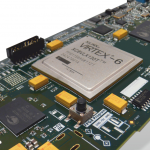“I vividly remember the old car I used to drive and all the benefits it offered. Yes, it did consume a lot of fuel, but it was tough. It was easy to maintain too. The electronic components were simple, not comparable to the advanced electronics that come with modern vehicles.”
These electronic systems were enough because all they needed to do is power a few instruments, stereo system and lights. Modern vehicles support a wider range of electronics that are also highly advanced. These electronics manage safety, emission and communication systems to name but a few.
But modernity anywhere comes with a number of risks. The role of automotive standards for electronic components is to control these risks through a set of standards and guidelines for electronic components in the modern vehicle.
Design Factors for Automotive Electronic Components
Automotive industry stakeholders have developed a variety of standards to date. These standards are guided by three supreme design factors.
Automotive owners expect their items to last for at least a decade, so electronic components must meet the longevity requirement.
Automotive electronics must also be designed against interference.
The third factor is reliability and sturdiness, whereby the component or system is expected to withstand extremes like vibrations, stress and temperature variations.
Popular Automotive Standards for Electronic Components
Existing standards apply for both manufacturing and testing of electronic components. We have come across numerous standards, but three stand out: AEC-Q100, AEC-Q200 and IATF. Below is a brief coverage of each.
AEC-Q100:
This is a qualification test for packaged integrated circuits for automotive applications. This stress test qualification is based on a failure mechanism. For an electronic component to be compliant with AEC-Q100, it ought to guarantee some level reliability after passing several stress tests.
AEC-Q100 defines several temperature ranges depending on operating temperature range of the integrated circuits as shown in the table below.
| Grade | Ambient Operating Temperature Range |
| 0 | -40°C to +150°C |
| 1 | -40°C to +125°C |
| 2 | -40°C to +105°C |
| 3 | -40°C to +85°C |
Table 1: Integrated Circuits and Temperature Ranges (from source)
AEC-Q200:
This stress resistance standard is set for all passive electronic component used in the automotive industry. Passive electronic components are usually defined by their incapability to amplify, oscillate, or generate an electrical signal. Examples of passive electronic components are resistors, inductors, capacitors and transformers.
AEC-Q200 aims to keep pressure resistance and temperature in check for consistent safety specifications in these components.
Under this standard, five temperature ranges are defined as shown in the table below.
| Grade | Temperature range | Component type | Application |
| 0 | -50 to +150 °C | Flat chip ceramic resistors, X8R ceramic capacitors | All automotive |
| 1 | -40 to +125 °C | Capacitor networks, resistors, inductors, transformers, thermistors, resonators, crystals, and varistors, all other ceramic and tantalum capacitors | Most Under Hood Components |
| 2 | -40 to +105 °C | Aluminum electrolytic capacitors | Passenger Compartment (Hot Spots) |
| 3 | -40 to +85 °C | Film capacitors, ferrites, R/R-C networks, and trimmer capacitors | Most Passenger Compartments |
| 4 | 0 to +70°C | – | Non-Automotive |
Table 2: Definition of Temperature Ranges for Passive Electronic Components (from source)
International Automotive Task Force (IATF) Certification:
When ordering automotive electronic components, IATF 16949 certification is equally important. Any organization that manufactures electronic parts, assemblies and components for the automotive industry should be IATF 16949-compliant. The aim of this standard in the automotive supply chain is to eliminate risks and errors for utmost customer satisfaction. It is a customer-centric standard.
Conclusion
Standards such as IATF 16949, AEC-Q200 and AEC-Q100 for automotive components are inevitable given high customer expectations and complexity of modern vehicles. In such an environment, it is essential to collaborate with a manufacturer who takes the initiative to comply with automotive standards for electronic components.
After 30-year experience in a wide variety of automotive electronics applications, naturally, MADES complies with the IATF 16949 certification. Get in touch with us for more about our certifications and experiences in this competitive sector.





